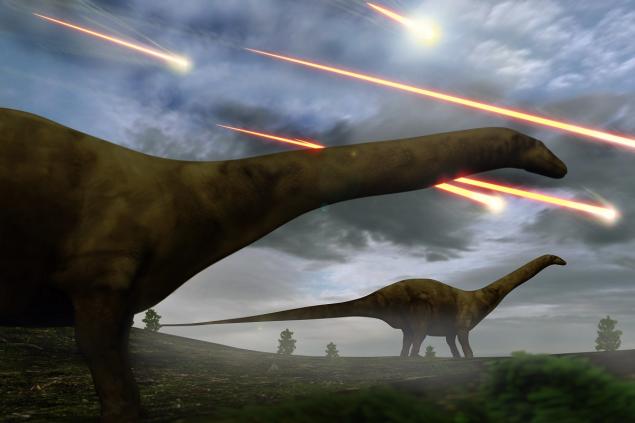202
After watching the movie “Armageddon”, where Bruce Willis saves the Earth from an asteroid, the Americans decided to conduct a bold experiment.
Can modern science protect the Earth from an approaching asteroid? To answer this question and try ways to save the planet called NASA and the European space Agency project DART (Double Asteroid Redirection Test).
View this post on Instagram
Publication by Alexander Misurkin (@aleander_misurkin)
This morning, the device, which in the fall of 2022 will crash into the satellite of the asteroid 65803, successfully launched from the Vandenberg spaceport in California. What is the importance of a unique mission and how it makes fiction a reality, we will explain in our article.
Movie lovers surely remember that in the Hollywood blockbuster “Armageddon” Bruce Willis at the cost of his life saves humanity from an asteroid the size of Texas. It was previously thought that an asteroid or comet would become potentially dangerous if its diameter exceeded 100 meters and its orbit approached Earth at a distance of less than 0.05 AU.
View this post on Instagram
Posted by Ste (e i suoi Podcast) (@steeisuoipodcast)
But life constantly makes its own adjustments to the theory. February 15, 2013 near Chelyabinsk fell a meteorite the size of a six-storey house (18-20 m). With a mass of about 13,000 tons and a speed of 18 km / s, the explosion power was 500 kilotons, which corresponds to three dozen Hiroshima.
View this post on Instagram
Posted by Irena Bergolc (@irena_bergolc)
According to official data, more than 1,600 people suffered from the shock wave and fragments of broken glass. And the damage from the destruction exceeded 1 billion rubles. And this despite the fact that the explosion occurred at a fairly large distance from the cities.
View this post on Instagram
Publication from Astronomy • Cosmology (@belcosmos_)
According to scientists, the Tunguska meteorite of 1908 was about 50 meters in size. And if it did not fall into the taiga, it could completely destroy a large city. But it looks like a speck of dust next to the asteroid that killed the dinosaurs.

The fall of a 10-kilometer meteorite 66 million years ago on the Yucatan Peninsula caused fires, earthquakes and tsunamis. Ejected into the atmosphere clouds of dust for several years covered the sun, which led to global cooling and the extinction of 70% of all life. If this were to happen today, the death toll could be in the millions.
The double asteroid Didim (65803), chosen by NASA experts for study, is smaller than Yucatan, but much larger than Tunguska. It is a system of 750-meter main body and 160-meter satellite Dimorph.
View this post on Instagram
Publication by CLEMENTINA SASSO (@clementinasasso1979)
In fact, neither Didymus nor his companion poses any real threat to us. Why, then, would NASA sacrifice a $300 million-plus spacecraft? The fact is that observations have revealed dozens of objects, the probability of collision with the Earth is much higher. Therefore, scientists and thought about the need to test planetary protection.
View this post on Instagram
Posted by Espaço Profundo (Deep Space) (@deepspace_e)
Next September, the asteroid pair will approach our planet at 6.7 million kilometers, which is about 15 times the distance to the moon. At this point, the DART device weighing 550 kg, like a dart, at a speed of about 24,000 km / h will deliberately crash into the asteroid Dimorph.
View this post on Instagram
Posted by SpaceXFanClub (@spacefanclub)
The asteroid we want to encounter is the size of a football stadium. And to get into it we have to object the size of a refrigerator, — commented in NASA. And if the space kamikaze can change the orbit of the asteroid by at least one degree, then humanity is able to cope with Armageddon without the help of a “hard nut”.
View this post on Instagram
Publication by ESA - European Space Agency (@europeanspaceagency)
Unfortunately, it will not be possible to accurately measure the actual change in the velocity of Dimorph as a result of the impact, the displacement of its orbit and the size of the formed crater until 2027. This will be done by the European space probe Hera, the launch of which is scheduled for 2024.
The 500-meter asteroid Bennu, discovered in 2013, is considered one of the most dangerous objects for the Earth. Therefore, in addition to constant observation, the OSIRIS-RE research probe was sent to it in 2016. The greatest probability of Bennu colliding with our planet is predicted in the years 2175-2199. But scientists from different countries are already thinking about how to neutralize the threat.
View this post on Instagram
Publication from NASA's OSIRIS-RE Mission (@osiris_re)
China plans to launch 20 Long March 5 rockets, which will change the orbit of the dangerous asteroid by 6,000 miles. And in the United States, the HAMMER plan is being developed, providing for the launch of a flotilla of 30-50 spacecraft with battering rams. According to calculations, if they were launched 10 years before the collision, it would be enough to move Bennu to a safe distance.
View this post on Instagram
Posted by Café com Astronomia (@cafeastronomia)
In addition to kinetic, there are other ways to change the orbit of an asteroid. First, it is a gravitational tractor, when a spacecraft is sent to an object, constantly pulling it in one direction. The force of this attraction will be extremely small, but over a long period of time it can do its job.
Second, an explosive deflector, where the trajectory is deflected by the explosion. Unlike Hollywood’s Armageddon, a nuclear explosion is not made inside, but at some distance from the asteroid. At the same time, the outer layers of its surface will evaporate and act like a rocket engine, taking the asteroid from its original orbit.
View this post on Instagram
Publication by ARGOTEC (@argotec_space)
There are also exotic projects to adjust the orbits of potentially hazardous objects. For example, heating their surface with powerful lasers or large mirrors, changing the thermal properties of the surface or installing a solar sail. They all take a long time that we may not have. After all, the same meteorite “Chelyabinsk”, unfortunately, noticed only when entering the Earth’s atmosphere.
And here we come to another issue, without the solution of which the planetary defense will not be effective. We are talking about tracking potentially dangerous asteroids and space debris. According to the head of the Institute of Astronomy of the Russian Academy of Sciences Boris Shustov, Russia needs a new national system of observations of near-Earth space.
540980
Roscosmos supports this opinion and proposes to create a constellation of satellites to monitor and counter space threats. In one country, however, such a project is unlikely to be productive. Therefore, representatives of the leading space countries are simply obliged to agree to give the children of the Earth a safe future. Moreover, even a small share of multibillion-dollar spending on armaments is enough for this.
The article and the preview used photos.
View this post on Instagram
Publication by Alexander Misurkin (@aleander_misurkin)
This morning, the device, which in the fall of 2022 will crash into the satellite of the asteroid 65803, successfully launched from the Vandenberg spaceport in California. What is the importance of a unique mission and how it makes fiction a reality, we will explain in our article.
Movie lovers surely remember that in the Hollywood blockbuster “Armageddon” Bruce Willis at the cost of his life saves humanity from an asteroid the size of Texas. It was previously thought that an asteroid or comet would become potentially dangerous if its diameter exceeded 100 meters and its orbit approached Earth at a distance of less than 0.05 AU.
View this post on Instagram
Posted by Ste (e i suoi Podcast) (@steeisuoipodcast)
But life constantly makes its own adjustments to the theory. February 15, 2013 near Chelyabinsk fell a meteorite the size of a six-storey house (18-20 m). With a mass of about 13,000 tons and a speed of 18 km / s, the explosion power was 500 kilotons, which corresponds to three dozen Hiroshima.
View this post on Instagram
Posted by Irena Bergolc (@irena_bergolc)
According to official data, more than 1,600 people suffered from the shock wave and fragments of broken glass. And the damage from the destruction exceeded 1 billion rubles. And this despite the fact that the explosion occurred at a fairly large distance from the cities.
View this post on Instagram
Publication from Astronomy • Cosmology (@belcosmos_)
According to scientists, the Tunguska meteorite of 1908 was about 50 meters in size. And if it did not fall into the taiga, it could completely destroy a large city. But it looks like a speck of dust next to the asteroid that killed the dinosaurs.

The fall of a 10-kilometer meteorite 66 million years ago on the Yucatan Peninsula caused fires, earthquakes and tsunamis. Ejected into the atmosphere clouds of dust for several years covered the sun, which led to global cooling and the extinction of 70% of all life. If this were to happen today, the death toll could be in the millions.
The double asteroid Didim (65803), chosen by NASA experts for study, is smaller than Yucatan, but much larger than Tunguska. It is a system of 750-meter main body and 160-meter satellite Dimorph.
View this post on Instagram
Publication by CLEMENTINA SASSO (@clementinasasso1979)
In fact, neither Didymus nor his companion poses any real threat to us. Why, then, would NASA sacrifice a $300 million-plus spacecraft? The fact is that observations have revealed dozens of objects, the probability of collision with the Earth is much higher. Therefore, scientists and thought about the need to test planetary protection.
View this post on Instagram
Posted by Espaço Profundo (Deep Space) (@deepspace_e)
Next September, the asteroid pair will approach our planet at 6.7 million kilometers, which is about 15 times the distance to the moon. At this point, the DART device weighing 550 kg, like a dart, at a speed of about 24,000 km / h will deliberately crash into the asteroid Dimorph.
View this post on Instagram
Posted by SpaceXFanClub (@spacefanclub)
The asteroid we want to encounter is the size of a football stadium. And to get into it we have to object the size of a refrigerator, — commented in NASA. And if the space kamikaze can change the orbit of the asteroid by at least one degree, then humanity is able to cope with Armageddon without the help of a “hard nut”.
View this post on Instagram
Publication by ESA - European Space Agency (@europeanspaceagency)
Unfortunately, it will not be possible to accurately measure the actual change in the velocity of Dimorph as a result of the impact, the displacement of its orbit and the size of the formed crater until 2027. This will be done by the European space probe Hera, the launch of which is scheduled for 2024.
The 500-meter asteroid Bennu, discovered in 2013, is considered one of the most dangerous objects for the Earth. Therefore, in addition to constant observation, the OSIRIS-RE research probe was sent to it in 2016. The greatest probability of Bennu colliding with our planet is predicted in the years 2175-2199. But scientists from different countries are already thinking about how to neutralize the threat.
View this post on Instagram
Publication from NASA's OSIRIS-RE Mission (@osiris_re)
China plans to launch 20 Long March 5 rockets, which will change the orbit of the dangerous asteroid by 6,000 miles. And in the United States, the HAMMER plan is being developed, providing for the launch of a flotilla of 30-50 spacecraft with battering rams. According to calculations, if they were launched 10 years before the collision, it would be enough to move Bennu to a safe distance.
View this post on Instagram
Posted by Café com Astronomia (@cafeastronomia)
In addition to kinetic, there are other ways to change the orbit of an asteroid. First, it is a gravitational tractor, when a spacecraft is sent to an object, constantly pulling it in one direction. The force of this attraction will be extremely small, but over a long period of time it can do its job.
Second, an explosive deflector, where the trajectory is deflected by the explosion. Unlike Hollywood’s Armageddon, a nuclear explosion is not made inside, but at some distance from the asteroid. At the same time, the outer layers of its surface will evaporate and act like a rocket engine, taking the asteroid from its original orbit.
View this post on Instagram
Publication by ARGOTEC (@argotec_space)
There are also exotic projects to adjust the orbits of potentially hazardous objects. For example, heating their surface with powerful lasers or large mirrors, changing the thermal properties of the surface or installing a solar sail. They all take a long time that we may not have. After all, the same meteorite “Chelyabinsk”, unfortunately, noticed only when entering the Earth’s atmosphere.
And here we come to another issue, without the solution of which the planetary defense will not be effective. We are talking about tracking potentially dangerous asteroids and space debris. According to the head of the Institute of Astronomy of the Russian Academy of Sciences Boris Shustov, Russia needs a new national system of observations of near-Earth space.
540980
Roscosmos supports this opinion and proposes to create a constellation of satellites to monitor and counter space threats. In one country, however, such a project is unlikely to be productive. Therefore, representatives of the leading space countries are simply obliged to agree to give the children of the Earth a safe future. Moreover, even a small share of multibillion-dollar spending on armaments is enough for this.
The article and the preview used photos.
Just returned from Rome, renting out places where you can eat from the belly for 15 euros.
Old people are guilty that adult children do not call and do not come, you just need to change a couple of things in their behavior.























